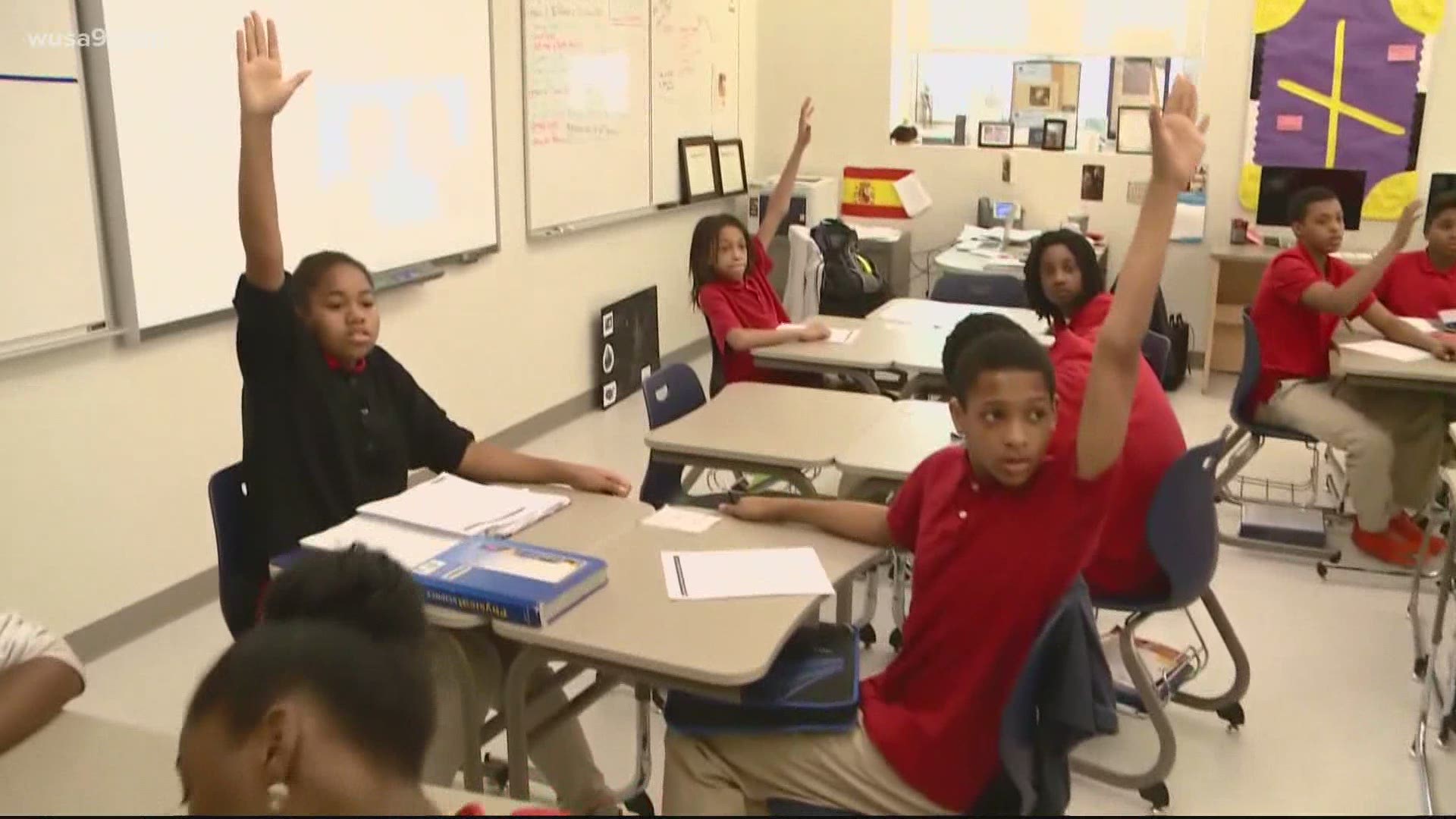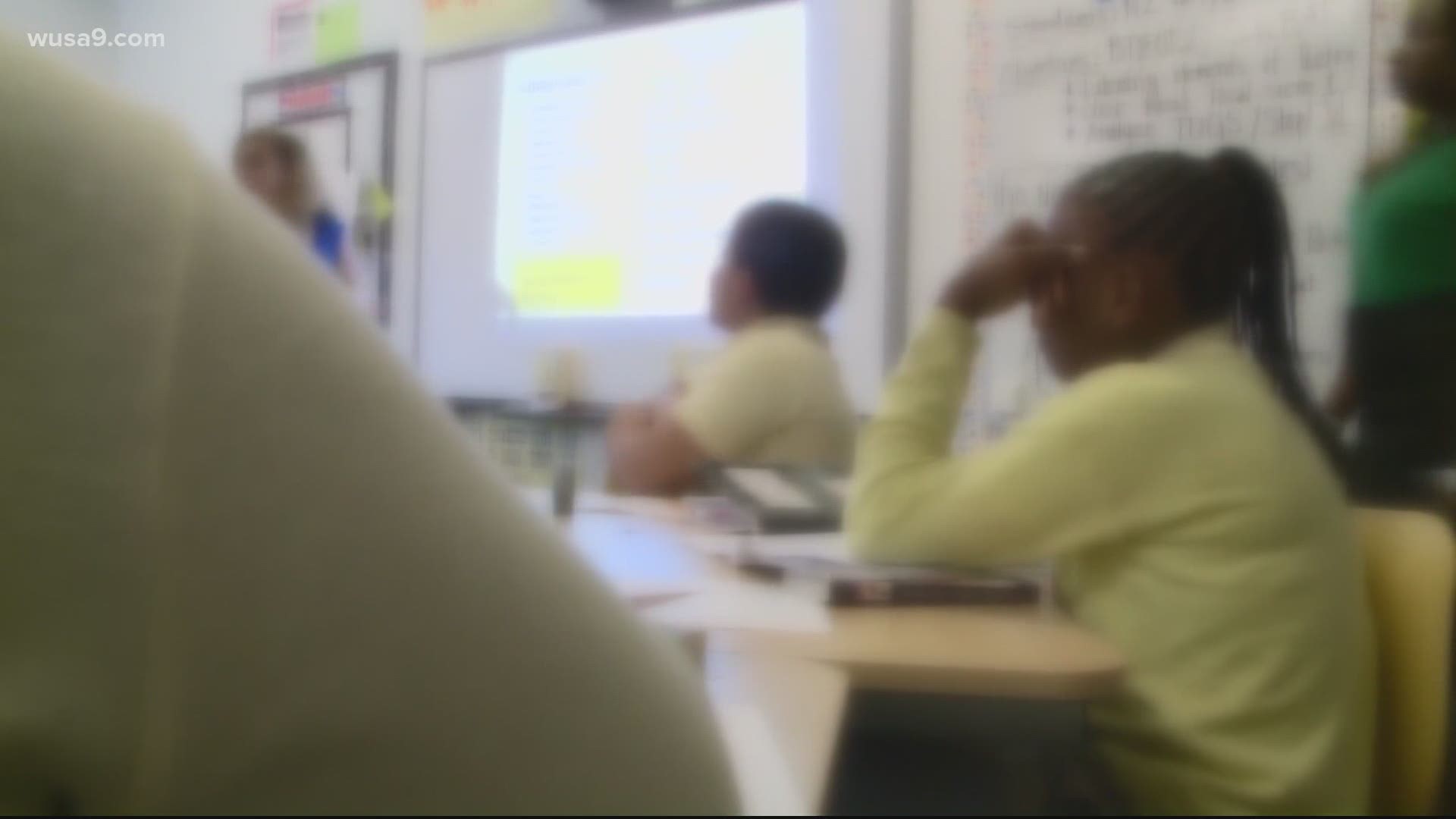ANNAPOLIS, Md. — Maryland Public Schools have released a first look at what students returning to classrooms could look like post coronavirus. The state's 54-page "Recovery Plan for Education" offers numerous strategies for how to safely bring students back, while maintaining social distancing. No matter what strategy schools adopt, one thing is for sure: classrooms are going to look very different.
The recovery plan is meant to be a baseline resource for the state's 24 school systems as they begin creating their own recovery plans, according to State Superintendent of Schools Karen Salmon.
Schools in Maryland remain closed through the end of the 2019-2020 academic year, with students not able to fully return to classrooms until the final phase of Gov. Larry Hogan's three-phase reopening plan. But MPS said now is the time to map out what the transition from online learning to in-person instruction will entail.
"Remote learning cannot replace students' experiences with their teachers, administrators, and support staff," Salmon said. "We must all unite in our efforts to maintain equitable learning opportunities and safely return students to their schools."
The "new normal" for school districts likely includes:
- Mandatory masks
- Daily temperature checks
- Enhanced/more frequent cleaning procedures and sanitation methods
- Enforced social distancing, especially for elementary students in areas like playgrounds.
Class sizes are likely to be reduced so that all desks can be kept six feet apart, and schools may choose to host classes outdoors or in large, open spaces like gyms or cafeterias. Some classes or meetings that involve hands-on instruction (art, PE, parent-teacher conferences) may be hosted virtually, and large school gatherings (assemblies, school dances) may be reduced or canceled.
MPS highly encourages all school districts to do their research before committing to any reopening plan, and to the best of their abilities to take into account what subjects and modes of instruction are best for students, and how factors like age, mental and emotion well-being affect learning. For example, research has found that a slowdown in instruction has a greater negative impact on math versus language arts. Therefore, schools are urged to prioritize teaching math in-person when possible.
"The COVID-19 pandemic has changed the landscape of education more dramatically than any other phenomenon in the history of our state school system," the state report said. "An event of this magnitude will definitely impact how we provide education to students."
Here are examples of modified schedules/calendars options for reopening that MPS is proposing:
One-Day Rotation
Students at all levels (elementary, middle and high school) would report to school one day a week, for a total of four days a month, and continue distance learning the other days of the week.
Two-Day Rotation
All students would report to school two days a week and continue distance learning the other days of the week.
A/B Week
Half of the student body reports to school four days a week and the other half continues distance learning. Students would rotate in-person and distance learning each week.
Elementary Face-to-Face and Secondary Distance Learning
Elementary school students would return to school first, but be spread out across the district's elementary and middle schools to reduce student-teacher ratios for social distancing. Middle and high school students would continue distance learning until public health officials say it is safe to relax social distancing. Then, elementary students would return to their normal buildings and middle/high school students would start in-person learning.
Grade Band Phase-In
This approach only begins when public health officials deem it safe to relax social distancing. Then elementary students would return first for a week, followed by middle school students the second week and high school students the third week. Middle and high school students would continue distance learning before they phase back in.
For all of these approaches, save for the grade phase-in, all elementary English for Speakers of Other Languages, Special Education, and resource teachers will teach groups of 10 or less; fine arts, PE and health teachers will be included in the rotations to reduce student-teacher ratios; and one day a week will be used for teacher planning/professional learning, where students would not report to the classroom and would continue online learning.
These five reopening options are not the only plans schools can consider, according to MPS.
RELATED: You can golf again in Maryland


